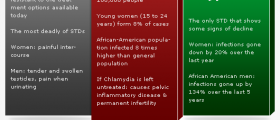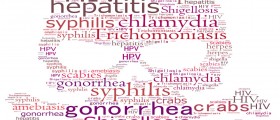
Reproductive health is a major component of health in general. It is, therefore, the term that refers to people having a responsible and satisfying as well as safer sex life along with their capability to reproduce. Also, reproductive health includes the freedom of each and every individual to decide about all the issues regarding sexual life.
So when we talk about reproductive health, it is a must to emphasize that all people, both men and women should be fully informed about reproductive health, have access to safe, effective and affordable methods of birth control and may approach suitable health care services of sexual and reproductive medicine. Women additionally require proper care during the period of their pregnancy and childbirth and infertile couples are supposed to be provided with all the necessary help to conceive a child.
Women's Sexual Health
Sexual health should not be perceived as mere absence of disease, dysfunction or infirmity, but, instead, it is supposed to be considered as a state of physical, emotional, mental as well as social well-being regarding one's sexuality.
It is essential for all women (this also refers to men) to have a positive and respectful approach towards their sexuality/sexual relationships. They should also enjoy in safe sexual experiences, never be intimidated, oppressed or feel discriminated. In order for sexual health to reach certain desirable level, one needs to be respected, properly protected and fulfilled.
Women's Reproductive Health and New Strategies
Childbearing is not so innocence period of one's life and it requires specific maturity of the entire body and mind. This is the reason why a woman should be at least 18 years old until she has her first child. Furthermore, in order to allow the woman's body to recuperate, the following pregnancy should not take place for at least 2 years after the last one. Finally, a woman who has had a miscarriage or abortion should be patient for at least 6 months and then try to conceive once again.
Each year around 358 000 women die because of complications associated with the very pregnancy or the childbirth. It is estimated that 99% of these deaths are actually reported in not so developed areas of the world, i.e. in the poorest countries of the world. The majority of such deaths would be easily prevented only if all women received equal care before, during and after pregnancy and childbirth.
The International Conference on Population and Development (ICPD) held in Cairo in 1994 was rather successful and managed to finalize a Programme of Action on population and development which was supposed to be applied for the following 20 years. According to the Programme there is a strategy which needs to be fulfilled and it focuses on meeting needs of women and men. As far as reproductive health is concerned, there are 4 qualitative and quantitative goals to be fulfilled.
It is important to reduce maternal mortality as well as narrow disparities in maternal mortality within countries and between geographical regions. This goal also refers to socio-economic and ethnic groups' disparities. Furthermore, people should have access to reproductive and sexual health services including family planning. All women are supposed to receive help regarding family planning counseling, pre-natal care, safe childbirth and post-natal care. Both genders have a right to prevention and appropriate treatment of infertility, women should know how to avoid undesirable pregnancy and, if necessary, to manage consequences of abortion. Reproductive tract infections must be treated properly which also refers to sexually transmitted diseases along with additional reproductive health conditions. The availability of certain services would be higher. This particularly refers to services dealing with HIV/AIDS, breast cancer, infertility, hormone therapy, childbirth as well as sex reassignment therapy.
Women's Reproductive Health Relevant Data
According to statistical data more than 80% of women in the US have had at least one child by the age of 45. The average number of children per woman is 2.2.
Contraception is a part of sexual lives of 64% of women between 15 and 44 years of age. 18% of women opt for sterilization while 17% chose birth control pills.
Sexually transmitted diseases predominantly affect younger women, and up to two-thirds of all sexual transmitted diseases are reported in women younger than 25 years of age. There is huge increase in the number of reported cases of Chlamydial infection. This is the most frequent bacterial sexually transmitted disease affecting women in the United States. The bacterium is blamed for around 4 million of newly diagnosed cases each year. The majority of patients are adolescents and young adults. It is estimated that by the age of 30, almost half of all sexually active women have had Chlamydial infection.
Thanks to contraceptive methods that are now widely available, the number of unwanted pregnancies, especially among teenagers and young adults is decreasing.
According to data more than 45 million women in their reproductive years report one gynecological condition each year. Endometriosis is present in 10-20 % of women of childbearing age while between 10 and 20% of women in reproductive years suffer from uterine fibroids.
In 1997 infertility was reported in approximately 6.1 million people. This number is significantly higher compared to the number of infertile people in 1988 (4.6. million people). 1 out of 4 infertile couples suffers from infertility caused by STDs. In women PID associated with STDs is blamed for 15% of all infertility cases.
Finally, hysterectomy, a surgical removal of the uterus, is reported to be the second most commonly performed surgery in women, following cesarean section delivery. Half of all hysterectomies are done due to endometriosis and uterine fibroids.

















Your thoughts on this
Loading...